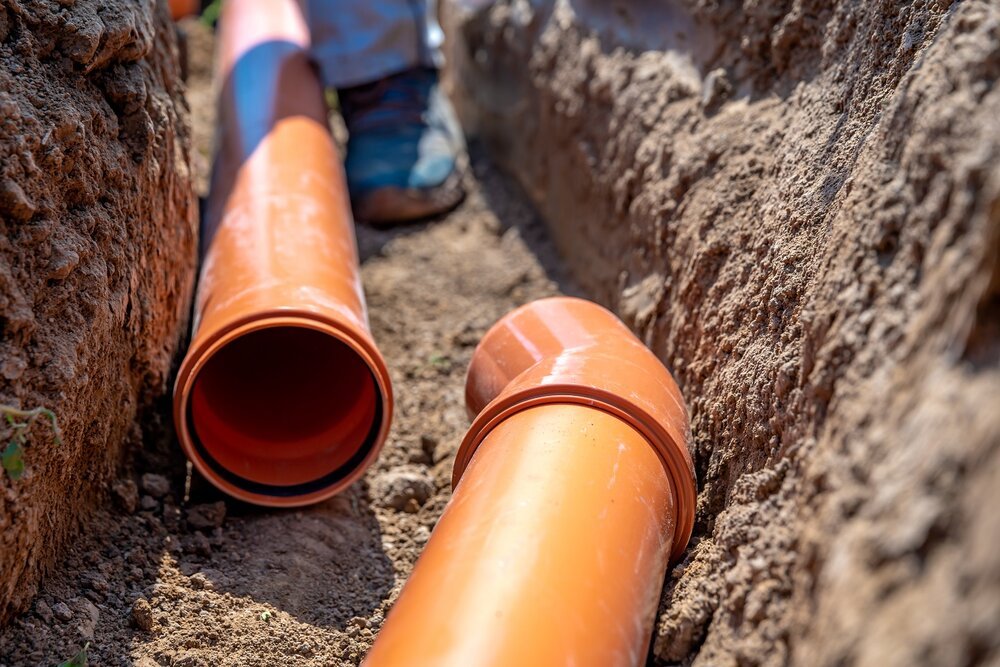A French Drain Might Be Needed to Ensure the Longevity of Your Landscape Design in the Plymouth, MI Area
To create a long-lasting and functional landscape design in the Plymouth, MI area, you may want to include a French drain in your landscape updates. This functional drainage solution can help to keep your outdoor spaces dry after a storm—and prevent some of the significant issues that come with standing water.
Related: 3 Tips for Making a Retaining Wall a Usable Addition to Your Paver Patio in the Canton, MI Area
What Is a French drain?
A fancy name for a less-than-fancy feature, a French drain is a narrow ditch on a slope with a drain pipe under a layer of gravel. The drain provides an exit for any standing water and shuttles it to a more desirable place. When installed correctly, the French drain can look like a neat and strategically placed rocky drainage ditch or be completely covered by grass for an almost invisible appearance.
The pipe within the French drain has small holes in it, allowing for water to pass through the gravel and into the pipe. Rather than a standard gutter where rain is collected as it runs off of a surface, the French drain manages groundwater, making it great for areas of your landscape where water tends to pool after a storm.
When Is a French Drain a Good Fit?
If you have a sloped landscape with the ability to harness gravity to move water from one area to another, a French drain could be a fitting solution for your landscape. It also can provide a smart solution for basements where groundwater leaks through the foundation.
It’s important to consider when a French drain is not the best solution for your landscape, too. If your area does not include a slope, the water may pool in your French drain, defeating the entire purpose of a French drain. Where the water goes from your French drain is also a consideration. Options for a French drain to end include tree areas or a rain garden.
What’s the Process of Installing a French Drain?
Installing a French drain requires skill and attention to detail to ensure the drain is installed correctly. The first step is to dig the trench for the French drain. Considerations for this trench include the width of the drain pipe being used, as well as the angle of the property. After digging the trench, it is filled with gravel. To discourage any weed growth around the French drain, the stone can be covered with drainage fabric. Next, the pipe is inserted into the trench. The pipe can be wrapped in landscape fabric to prevent any roots or dirt from blocking the system, and preventing the movement of water. Once the pipe is installed, the remainder of the trench is filled with gravel.
What Type of Gravel Should Be Used?
French drains present some flexibility—the gravel could be exposed to create an eye-catching area amid your landscape design or it could be covered with soil and grass to give it a near-seamless appearance.
Larger gravel can be a better fit for a French drain because it allows for water to pass more quickly between the spaces in the rock. You can choose from a variety of different colors to complement your landscape design—classic gray gravel can give your French drain a more traditional feel, or you can use a variety of earth-tone stone to create a beautiful visual.
About the Author
Through consistent communication among all our lawn care, landscape maintenance, and irrigation team members, Local Life provides efficient and reliable landscape solutions. From our full property analysis during our maintenance visits to the expert design and construction options we offer, we provide a wide range of services for keeping landscapes beautiful. And our customers’ satisfaction is second-to-none. Everything we do follows our core set of values—safety, accountability, continuous learning, teamwork, and integrity. Our knowledgeable team has your property’s best interest at heart.

